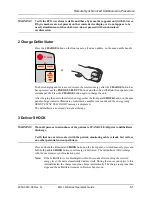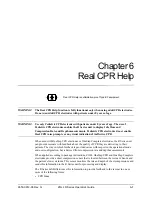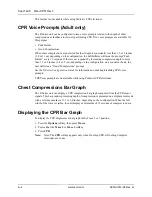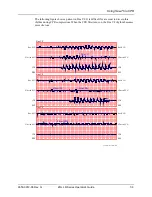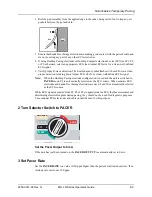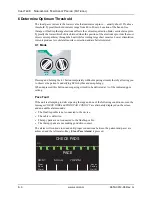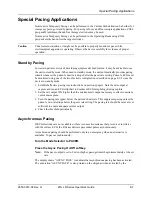
C
HAPTER
8
N
ONINVASIVE
T
EMPORARY
P
ACING
(O
PTIONAL
)
8–2
www.zoll.com
9650-0912-06 Rev. G
Noninvasive Temporary Pacing
R Series defibrillators with the pacer option contain a VVI demand pacemaker – a safe and
effective design for Noninvasive Temporary Pacemakers.
Proper demand pacing requires a reliable, high quality surface ECG signal. For best results:
•
Apply both standard ECG monitoring electrodes and hands-free pacing therapy electrodes
(such as, OneStep electrodes
or
stat-padz
)
to the patient,
or
•
Use OneStep Pacing electrodes, or OneStep Complete electrodes. These hands-free therapy
pads include both ECG monitoring and pacing/defibrillation electrodes in a single pad
assembly. They provide reliable ECG monitoring without the need to use separate ECG
leads. With these electrodes you must also use the OneStep Pacing cable.
Determine Patient Condition and Provide Care Following Local
Medical Protocols.
Prepare the Patient
Remove all clothing covering the patient’s chest. Dry chest if necessary. If the patient has
excessive chest hair, clip it to ensure proper adhesion of the electrodes.
1 Apply ECG Electrodes/Hands-Free Therapy Electrodes
The R Series supports two electrode configurations for pacing:
•
OneStep Pacing Configuration
Simultaneous ECG monitoring and pacing can be performed with a single set of therapy
electrodes when using OneStep Pacing electrodes or OneStep Complete electrodes along
with a OneStep Pacing cable. The OneStep Pacing cable must be connected to both the MFC
and ECG connectors of the R Series unit. Attach OneStep electrodes according to
instructions on the electrode packaging. Then connect the electrodes to the OneStep Pacing
cable.
•
Separate ECG Electrodes and Hands-free Therapy Electrodes Configuration
Apply ECG electrodes, attach lead wires, and connect the ECG cable to the R Series rear
panel (see page 9-3 for instructions on attaching ECG electrodes to the patient). Attach
hands-free therapy electrodes according to instructions on the electrode packaging. Connect
these therapy electrodes to the OneStep cable.
Therapy Electrode Application
WARNING!
Poor adherence and/or air under the therapy electrodes can lead to the possibility of
arcing and skin burns.
1. Apply one edge of the pad securely to the patient.


